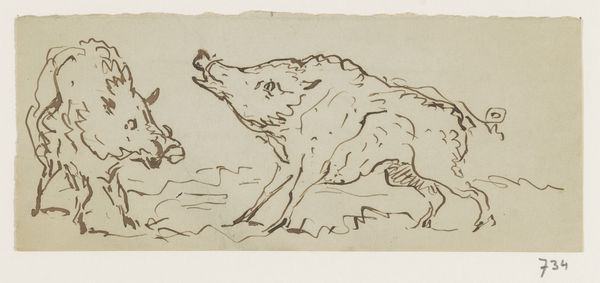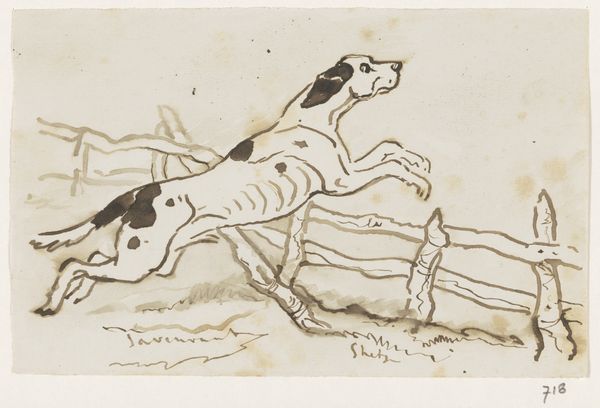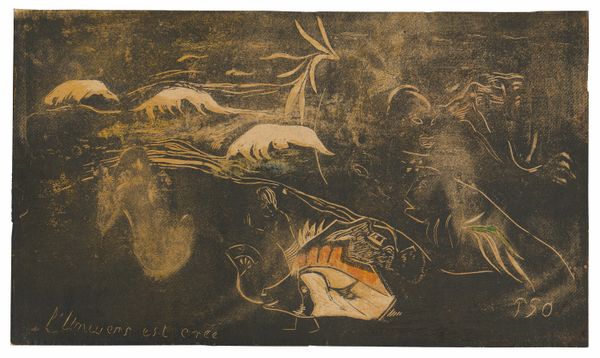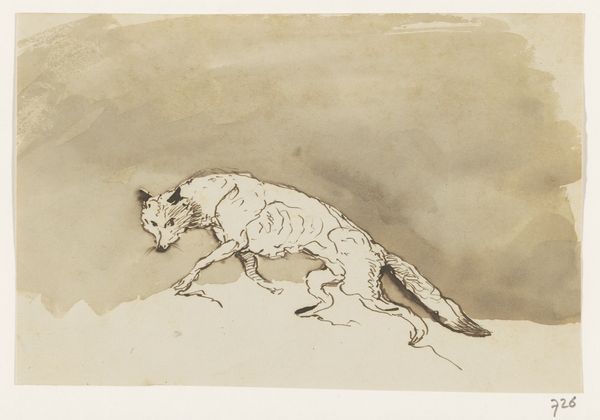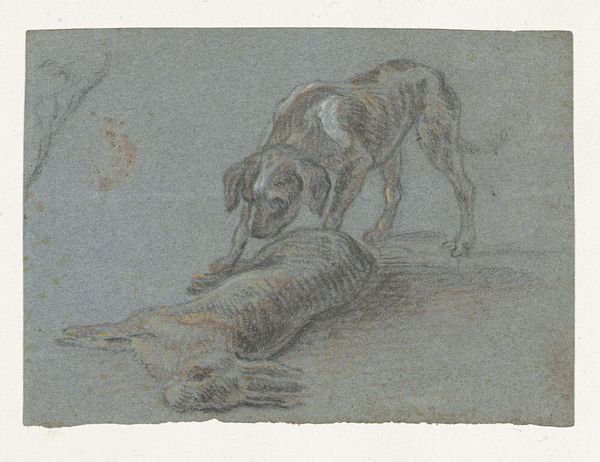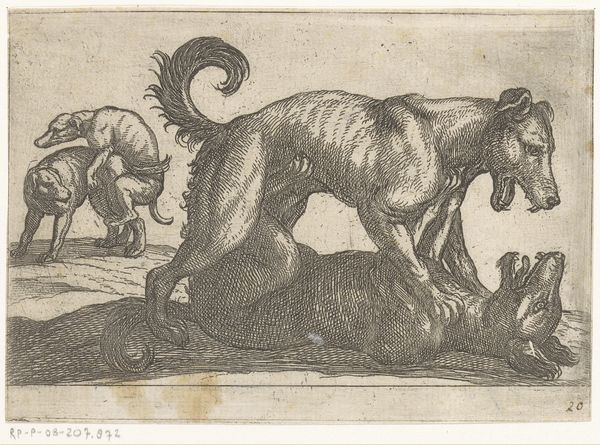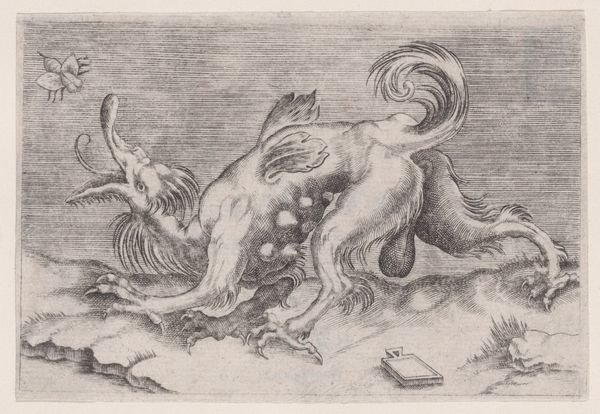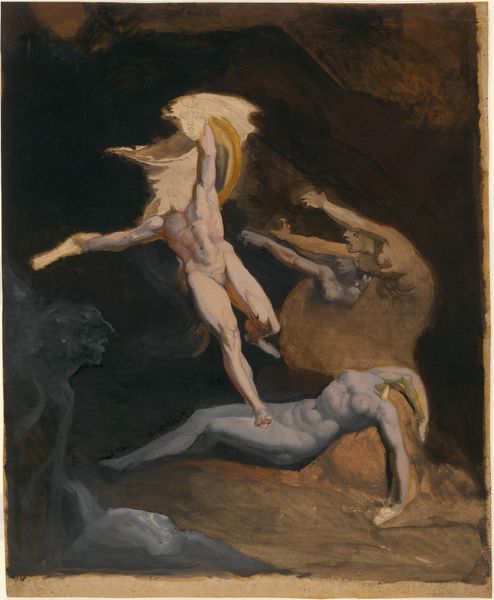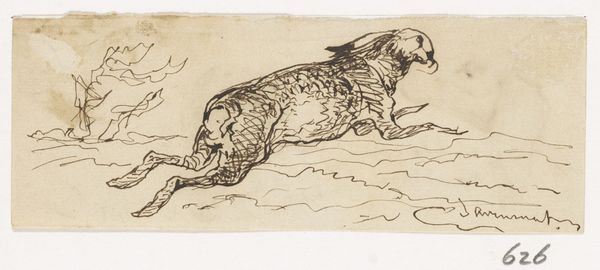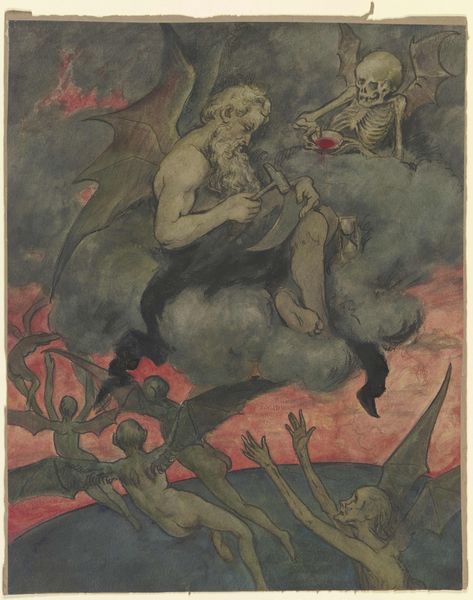![Dream of Thiralatha [from "America," cancelled plate d] by William Blake](/_next/image?url=https%3A%2F%2Fd2w8kbdekdi1gv.cloudfront.net%2FeyJidWNrZXQiOiAiYXJ0ZXJhLWltYWdlcy1idWNrZXQiLCAia2V5IjogImFydHdvcmtzLzFlNzc4ZDE2LTg5MWEtNDhhYi04ZjI1LWRjOGE0ZTA4ODAwZi8xZTc3OGQxNi04OTFhLTQ4YWItOGYyNS1kYzhhNGUwODgwMGZfZnVsbC5qcGciLCAiZWRpdHMiOiB7InJlc2l6ZSI6IHsid2lkdGgiOiAxOTIwLCAiaGVpZ2h0IjogMTkyMCwgImZpdCI6ICJpbnNpZGUifX19&w=3840&q=75)
Dream of Thiralatha [from "America," cancelled plate d] c. 1794 - 1796
0:00
0:00
Dimensions: plate: 11.8 x 17.2 cm (4 5/8 x 6 3/4 in.) sheet: 21 x 24.1 cm (8 1/4 x 9 1/2 in.)
Copyright: National Gallery of Art: CC0 1.0
Curator: Well, I find it immediately haunting – that slumped figure under… well, it looks like an eyebrow of despair. It's an odd sense of confinement even in what should be an expansive landscape. Editor: Indeed. What you're observing is William Blake's watercolor and ink print, dating back to around 1794-96, titled "Dream of Thiralatha." It was intended as part of his "America" series but never completed. Curator: "Dream" seems ironic. More like a nightmare from which there's no waking. I am intrigued by the other figure, though... seemingly emerging out of clouds, as an apparition or perhaps a beckoning angel. Editor: That spectral form does offer a visual counterpoint. Blake often uses light to signify hope or spiritual awakening, while darkness represents oppression or ignorance. Notice how Thiralatha is physically weighed down, shadowed under a constricting curve. She looks fetal, her limbs tight against her torso. Curator: Symbolically, does the arched form mean more than oppression? Is it protection as well? Because she appears fetal, perhaps in the early days after trauma? Editor: Perhaps so. The line is deliberately ambiguous and could mean to encompass both entrapment and potential protection – it all relies on our perceptions of what it all entails. Note also the way the colors wash together – a swirl of indigo blues with tinges of hope. Everything flows in a watercolor haze. Curator: Yes, as if the waking world cannot be sharply defined. The visual language of romanticism is potent and highly expressive of one's emotions. Also, do you see faint writing near the dark clouds above? Editor: I do! "The sun arises..." What do you reckon of Blake's decision not to publish this artwork? Curator: Maybe it proved too intensely personal, even for Blake. He revealed so much through this, in many ways this unfinished piece could stand alone on its strength. Perhaps its direct rawness unnerved even the artist. Editor: It makes one wonder what stories and artistic futures remain shrouded, unrealized, for a complex mix of reason to each creator.
Comments
No comments
Be the first to comment and join the conversation on the ultimate creative platform.
